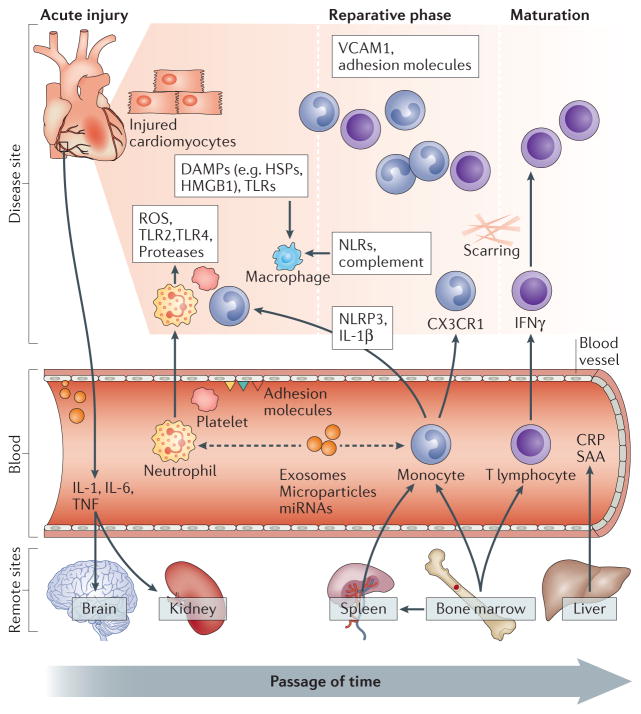Figure 1.
Biological pathways central to the pathogenesis of acute myocardial infarction (AMI). Immediately following AMI, a number of local processes are activated with release of reactive oxygen species and cytokines with infiltration of circulating neutrophils and monocytes resulting in acute myocardial injury. Simultaneously a number of remote sites are also activated (e.g. spleen, bone marrow) via signalling pathways that result in further activation of the immune system and injury. Following this, a reparative phase ensues predominantly mediated by monocytes and T-lymphocytes resulting in tissue repair and recovery with upregulation of processes involved in angiogenesis and extracellular matrix deposition. Abbreviations: ROS: reactive oxygen species; TLR: toll-like receptors; DAMPS: damage associated molecular patterns; HSP: heat shock proteins; HMGB1: high mobility group box 1 protein; VCAM: vascular cell adhesion molecule; NLR: NOD-like receptor; NLRP3: NOD-like receptor family pyrin domain containing 3; IL: interleukin; TNF: tumour necrosis factor; IFN: interferon; CX3CR1: CX3 chemokine receptor 1; miRNA: micro ribonucleic acid; CRP: C reactive protein; SAA: serum amyloid A.

